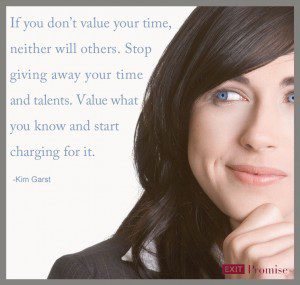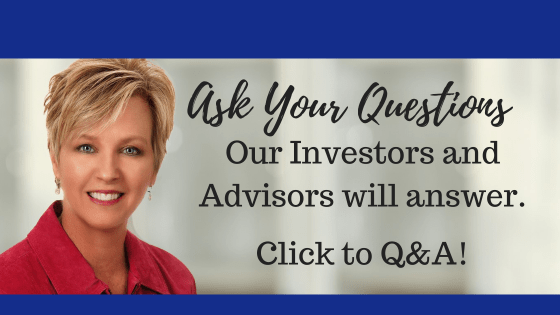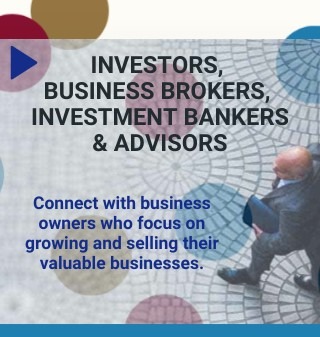- Maximizing After Tax Proceeds When Selling Your Business - June 7, 2024
- Understanding the Accredited Investor Rule 501 of Regulation D - February 27, 2024
- Which is Best – Business Broker, M&A Advisor, or an Investment Banker? - October 2, 2023
 Often business owners ask me one of those “quick questions”. Usually I chuckle because the answer that follows and implementation of the advice offered is anything but ‘quick’! Just this week, I was asked a common question from an entrepreneur struggling to grow his business. He asked “what can I do to ultimately maximize the sale price of my business?”
Often business owners ask me one of those “quick questions”. Usually I chuckle because the answer that follows and implementation of the advice offered is anything but ‘quick’! Just this week, I was asked a common question from an entrepreneur struggling to grow his business. He asked “what can I do to ultimately maximize the sale price of my business?”
It was clear to me this entrepreneur was looking for a silver bullet. I didn’t have one for him. However, I was able to share with him the 4 ways to increase the value of a business. By the end of our conversation, he knew what he needed to do.
I explained there were four factors that will have the greatest impact on the sale price of his business. With those factors in mind, this entrepreneur will be better prepared to answer his own eventual question: how do I price my business for sale?
1. The Larger the Business, the Greater the Sale Price
This is obvious. Right?
Yes, it’s true. But the real reason size is the most powerful and, in my opinion, the most impactful factor on the sale price of a business is not really related to dollars, profit and loss statements, or EBITDA multiples. Rather it has everything to do with the people and systems established in a larger business. The larger the business, the more likely the human resources and the business systems they operate have very little to do with the entrepreneur’s activities. The business’s lack of dependence on the entrepreneur is extremely important to a buyer, and in a smaller business it’s much less common. Growing a larger business takes work, discipline, and ultimately makes the removal of the business owner from the day-to-day operations and management necessary.
2. Strategic Buyers Pay More for a Business
Not all buyers are alike. A business sold to an internal group of employees, a co-shareholder or family members typically result in a lower sales price. A business sold to a financial buyer will be looking for a healthy return on their investment above what they would expect from investing in stocks and bonds in the open market. Financial buyers typically pay more than internal buyers but less than a strategic buyer.
above what they would expect from investing in stocks and bonds in the open market. Financial buyers typically pay more than internal buyers but less than a strategic buyer.
The strategic buyer’s motive to buy a business is not always apparent to the seller. Such a buyer may want to get into a new market without taking the time to develop the infrastructure to add a new product or service. The strategic buyer may want access to a new distribution channel, geography, or have underutilized assets they could deploy selling and servicing another business’s customer base. Regardless of their motive, the strategic buyer offers more to a seller than the internal or financial buyer.
Understanding who may be a potential strategic buyer is powerful for the entrepreneur. Aligning a business to be strategically attractive to another business is prudent.
3. Consistent Revenue Growth for Three Consecutive Years Puts the Seller in the Driver’s Seat
When a business is growing three years in a row, all is right with the world. Employees, sales teams, and vendors are pleased to be working with the business. The bankers love it, too. As long as the revenue growth isn’t excessive, the entrepreneur is able to grow the systems, hire good people, and make everyone happy.
Alternatively, if revenue is shrinking as the entrepreneur puts their business on the market, buyers are wary because the risks are great.
Buyers will carefully examine three full years of financial data in addition to the current year-to-date financial statements before making an offer through a Letter of Intent. Having consistent financial statements with increasing gross revenue is one of the best ways to be positioned as an entrepreneur undertaking the selling process.
4. The Lack of Concentrations Reduces the Business Buyer’s Risks
Buyers view customer, supplier, and employee concentrations as risky. Frankly, they should and so should the entrepreneur. When a business has few customers, suppliers, and vitally important employees, they face extraordinary risks not associated with larger, well-established businesses.
Any customer who represents more than 8% of the business’s gross sales revenue is considered a customer concentration. Diversification of the customer base is necessary.
Concentrations exist on the supply side as well. Without a formal supplier agreement in place, any significant supplier of goods or services to a business holds the upper hand in the business relationship. Again, this form of risk should be eliminated.
Key employees are important to any successful business. But those without formal agreements can put the business in a precarious position, particularly when the business is for sale or sold. Steps should be taken to reduce this business risk as well.
By eliminating customer, supplier, and employee concentration risks, the entrepreneur will increase their likelihood of selling their business and in doing so will increase the sale price they receive.
Although there are additional factors that impact the sale price of a business, an entrepreneur will benefit greatly if they are able to address these four factors as they grow their business. As I mentioned previously, there is no silver bullet for my client or other entrepreneurs. In fact, the gross sales price is only part of the equation when selling a business. The structure of the transaction is also very important if a business owner desires to maximize the net cash proceeds he or she receives. That’s a blog subject for another day.
Oh, by the way did I mention the entrepreneur’s company is only four years old? Truly, this entrepreneur understands the importance of planning and knows it is never too early to begin thinking about an exit from the business.












